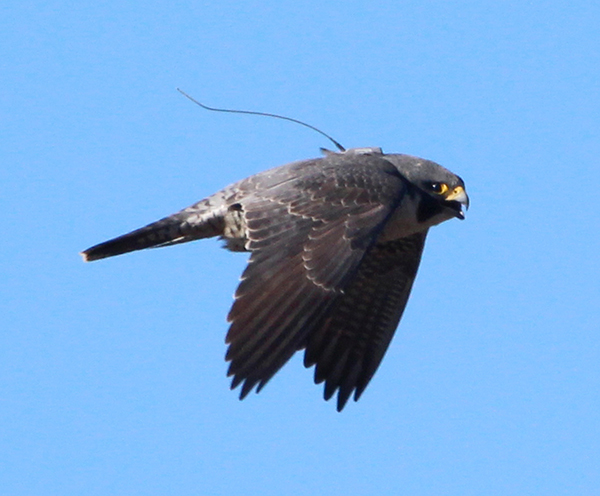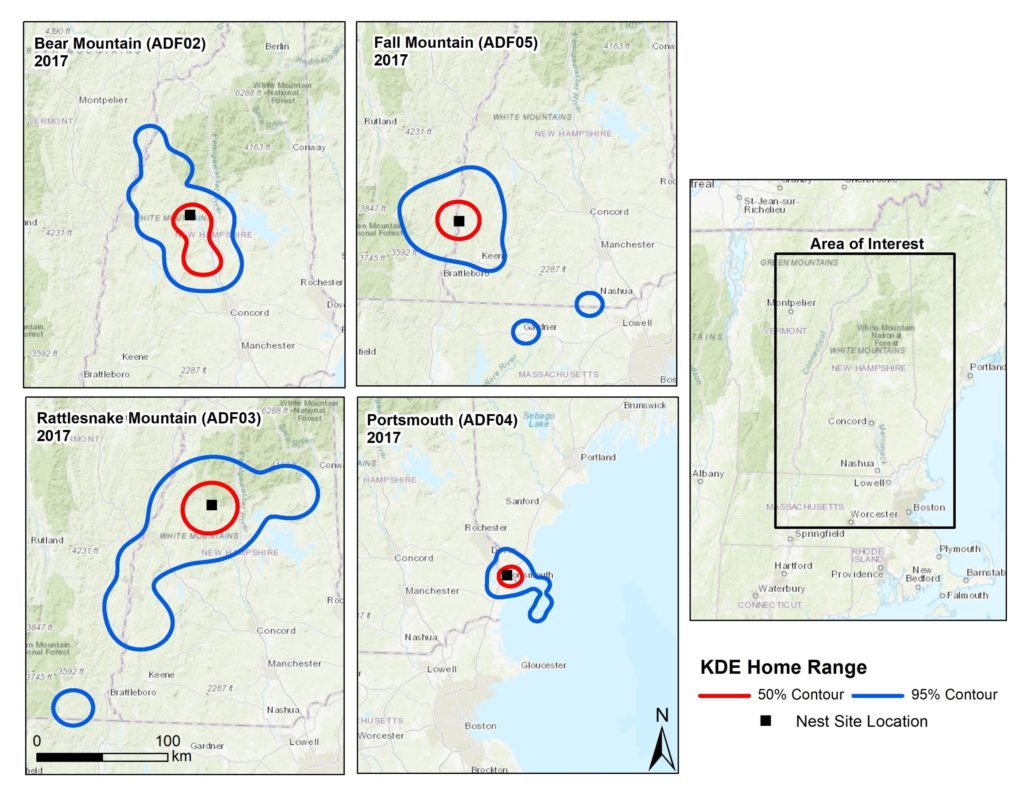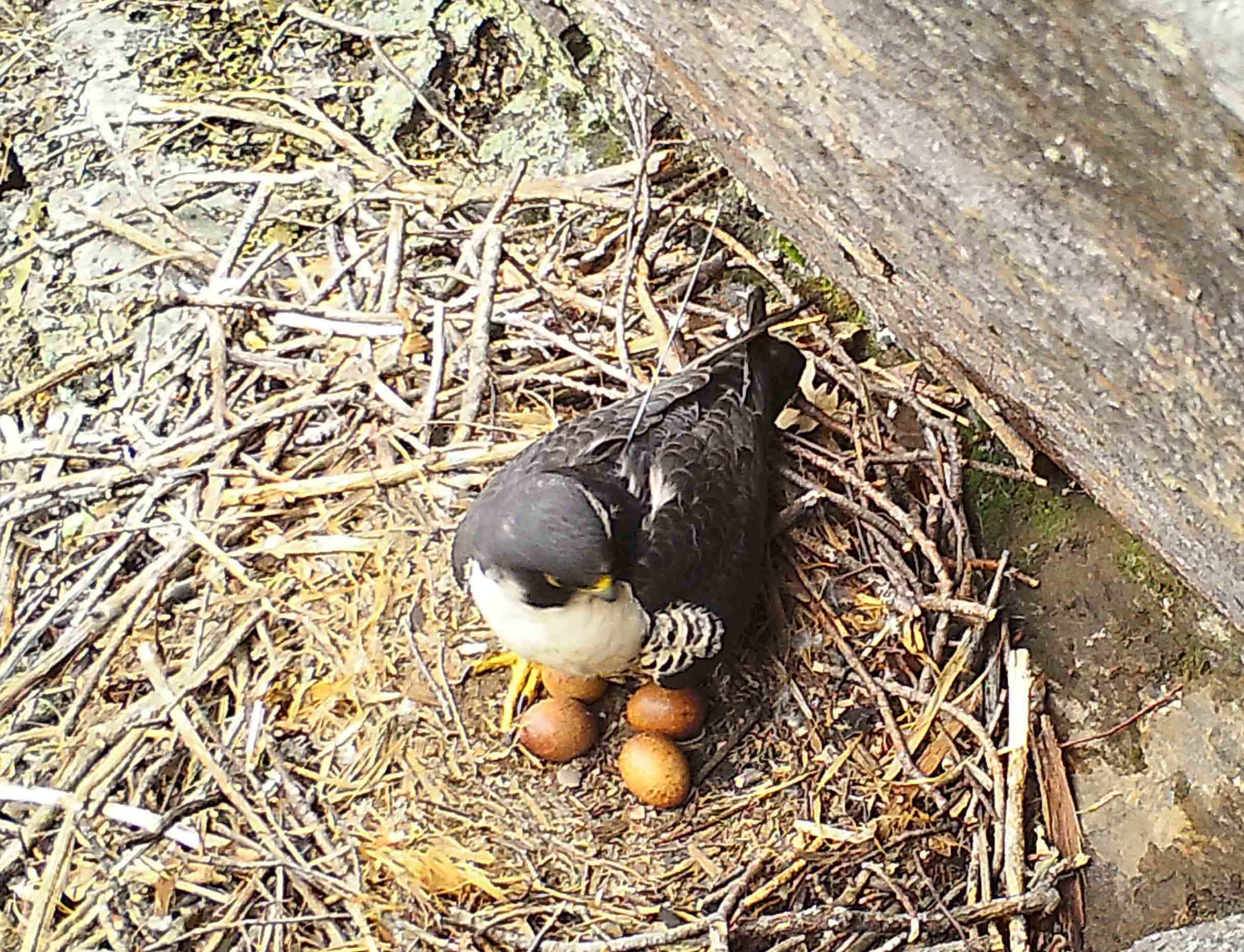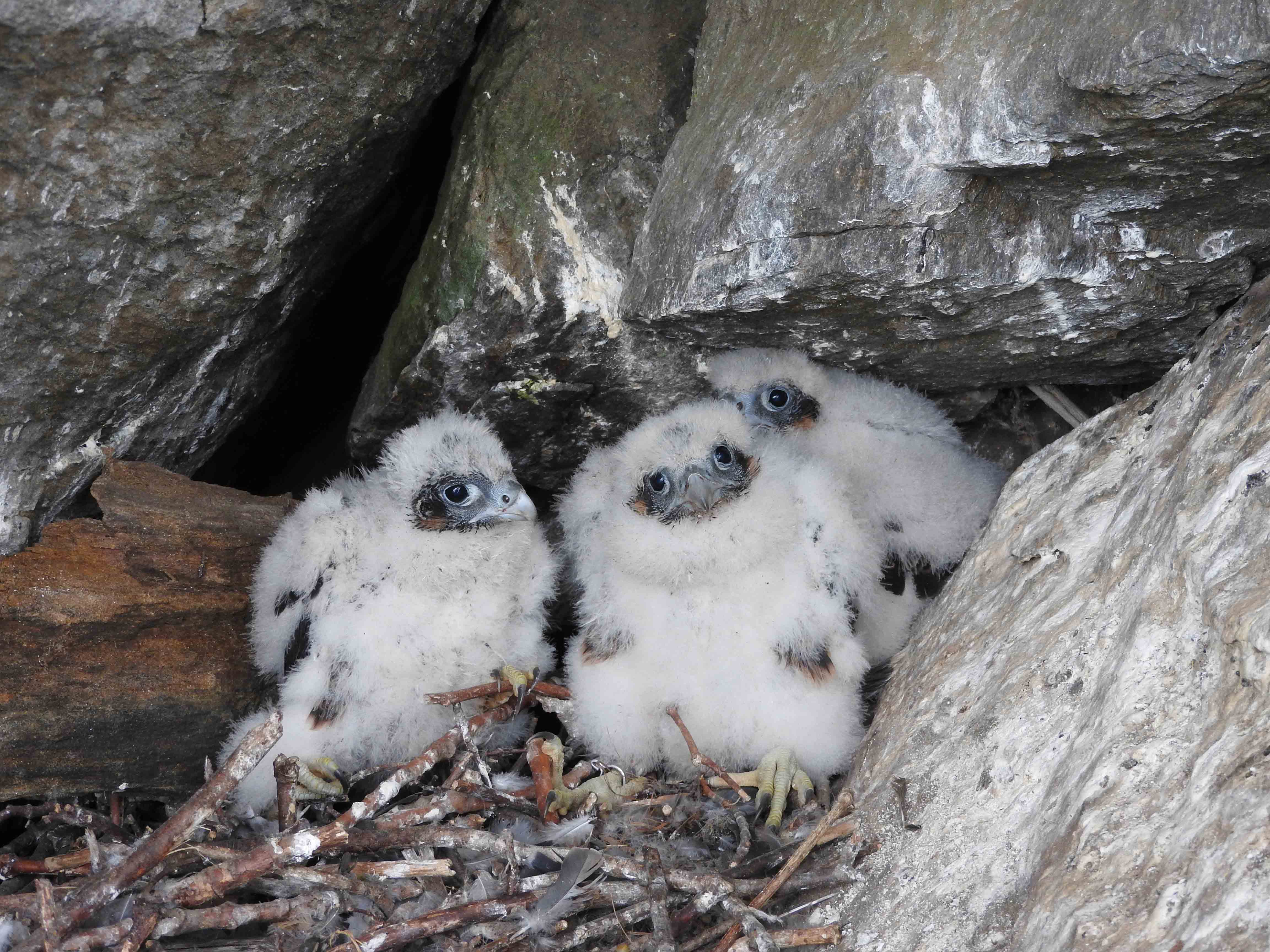Determining breeding range, wintering range, and migration routes of Peregrine Falcons in New Hampshire
Following their near extirpation in the 1950s due to contaminants and other factors, New Hampshire’s Peregrine Falcon population began recovering starting in the 1980s. Most of the breeding peregrines in the state nest on cliffs or manmade structures. As a result of breeding site monitoring associated with recovery efforts, baseline data concerning breeding site productivity, behavior, and phenology for New Hampshire peregrines are well documented.
Little is known, however, about the annual movements of New Hampshire’s breeding peregrines. Are they migratory or year-round residents? If they migrate, where to? How far do breeding individuals venture from their eyries during the breeding season, and what habitats are important to them?
What We Studied

We used satellite telemetry to learn about the year-round ecology of Peregrine Falcons breeding in north-central and southeastern New Hampshire. Between the years 2014–2017, we instrumented five adult female Peregrine Falcons, associated with four different nest sites, with satellite transmitters. We also documented the size and shape of peregrine home ranges in breeding areas and in wintering areas.
Update January 2022: A female Peregrine Falcon, banded in May 2014 by a field crew from BRI, NH Audubon, and Stantec Inc., was admitted to the Pocono Wildlife Rehabilitation and Education Center in Stroudsburg, PA. This falcon has provided fascinating data regarding Peregrine breeding home ranges and migration pathways over the last eight years. She was found underweight and grounded, and is currently recovering from a bacterial infection, and will hopefully be released shortly! Read more about her story here.


Map 1 (left): Breeding area home range (50% and 95% contour) estimates for four Peregrine Falcons fitted with satellite transmitters in north-central New Hampshire, 2017. Map 2 (right): All compiled movements of three Peregrine Falcons instrumented with satellite transmitters, 2014-2016. Shown are fall and spring migration events (ADF02 and ADF03) as well as post-breeding movements (ADF01) and pre-breeding (ADF03) movements.
What We Found: Study Highlights

Tracking data in this study has enabled first-time estimates of breeding and wintering area range and migration routes for a subset of New Hampshire’s breeding population. Peregrines tracked in this study generally followed a relatively direct southwesterly migration route during the fall, travelling through western Massachusetts and Connecticut to two areas roughly 150 km apart in southeastern Pennsylvania. One peregrine migrated south to coastal Rhode Island, while one remained in the vicinity of its territory on a year-round basis.
All peregrines displayed notable annual fidelity to both breeding and wintering areas, and migration timing was relatively consistent among years and individuals. Peregrines arrived in their non-breeding/wintering areas 5-6 days following their departure from the breeding area.
Findings suggest that peregrines nesting in temperate forest habitats require a relatively large home range area in order to meet their energetic needs and those of their developing young. In general, home range sizes for the individuals tracked in this study appeared to be notably larger compared to most comparisons in the literature; however, the majority of comparison studies emphasized peregrines nesting in notably different habitat types (i.e., coastal and arctic regions), and differences in tracking technologies and analysis methods limit direct comparisons.
Downloads

Download Project Reports:
DeSorbo, C. R., C. Martin, Gravel A., J. P. Tash, R. Gray, C. Persico, L. Gilpatrick and W. Hanson. 2018. Documenting home range, migration routes and wintering home range of breeding Peregrine Falcons in New Hampshire. A joint report prepared by Biodiversity Research Institute, Stantec Consulting Inc. and New Hampshire Audubon, submitted to Stantec Consulting Inc., Research and Development Grant Program. Biodiversity Research Institute, Portland Maine, Stantec Consulting Inc., Topsham, Maine and New Hampshire Audubon, Concord, New Hampshire. 27 pp.
DeSorbo, C. R., C. Persico, B. Hanson and L. Gilpatrick. 2018. Home range, dispersal timing and migration routes of Peregrine Falcons in New Hampshire: Progress report for 2017 field season. BRI report # 2018-13, submitted to Stantec Consulting, Inc., Topsham, Maine. Biodiversity Research Institute, Portland, Maine. 7 pp.
Download Map 1:
Breeding area home range (50% and 95% contour) estimates for four Peregrine Falcons fitted with satellite transmitters in north-central New Hampshire, 2017.
Partners
Project Partners (co-PIs):
Project Support:
- Stantec Consulting Services Inc. – Stantec Science Research Grant Program
- Avangrid Renewables
- Charles Blake Fund administered by Nuttall Ornithological Club


